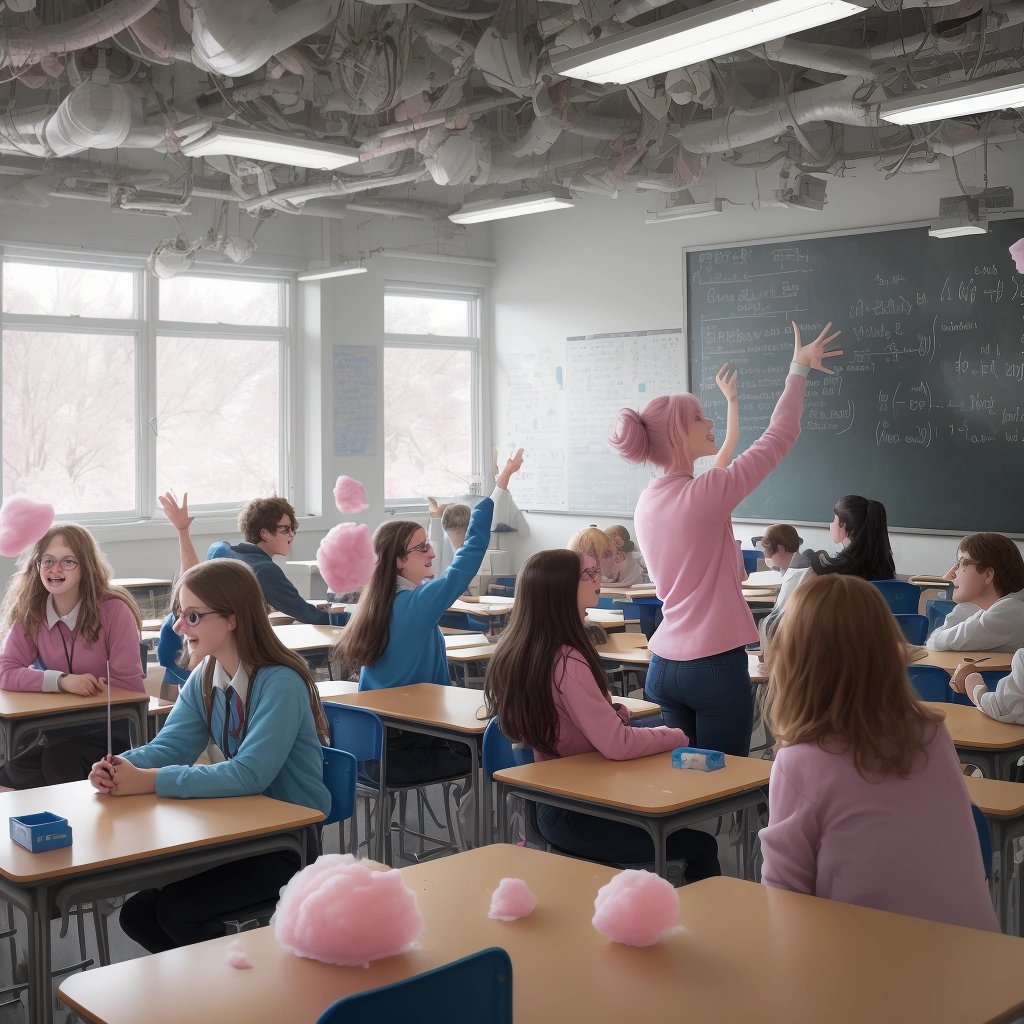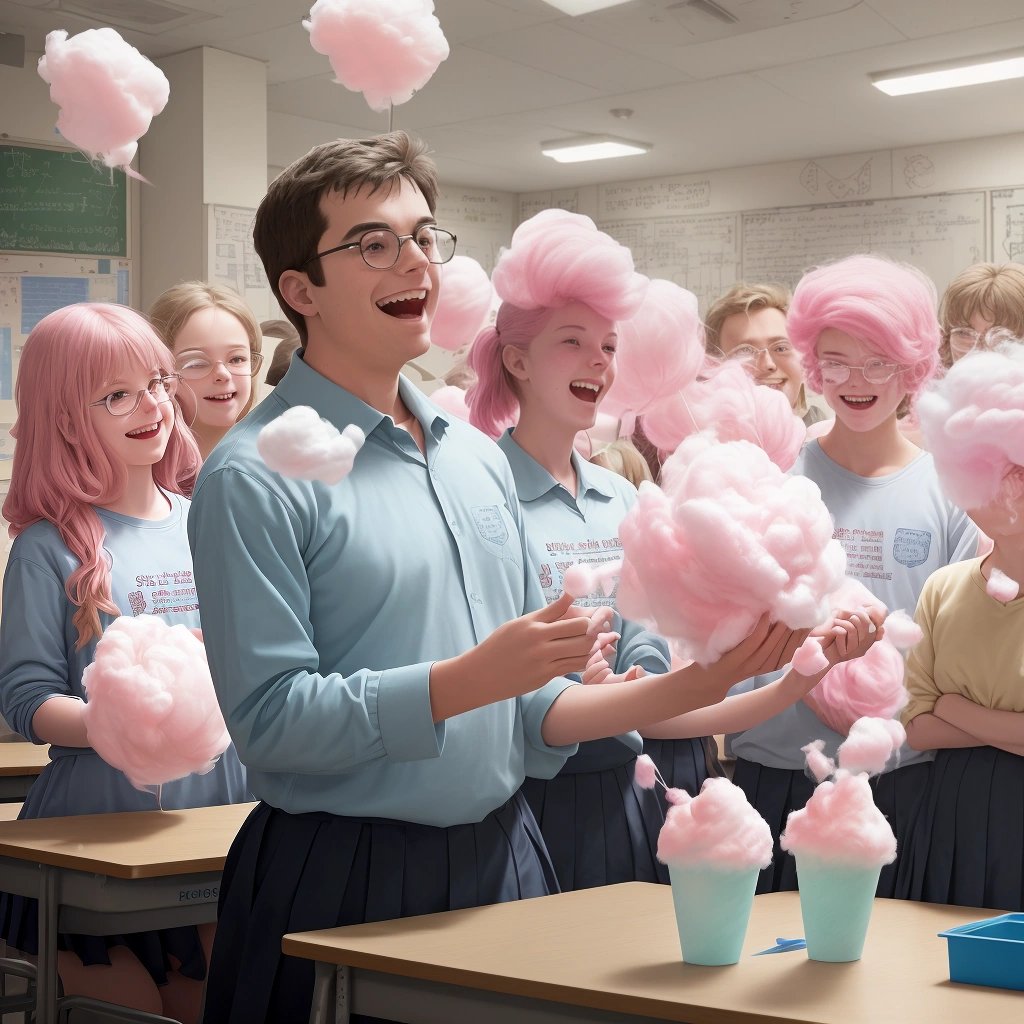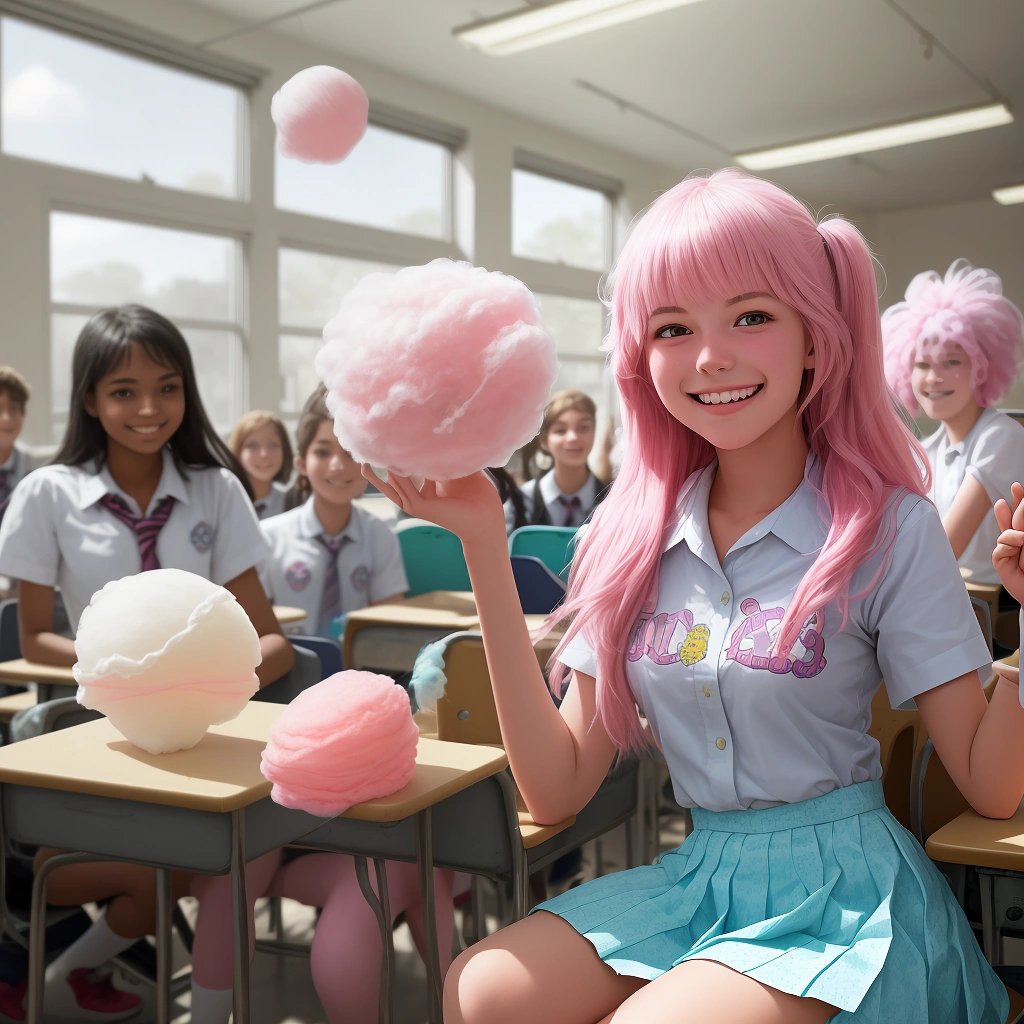Here in the state of Massachusetts, where education consistently ranks top in the nation and where history can feel just as vibrant as a Dunkin' Donuts cup full of iced coffee, you can be sure of one thing: we're not afraid to get a little creative in the classrooms.
Remember when you used a resin-dipped cow skull to represent the Pythagorean theorem? Well, those math teachers have nothing on our physics faculty. They've boldly pushed learning boundaries by elevating the humble cotton candy into an analogy for the rather elusive concept of "Critical Mass," a term in nuclear physics. They call it the "Cotton Candy-Analogy for Critical Mass Theory" project or, as the kids have fondly begun to refer to it, the "Saccharine Supernova."
Is it a sweet understanding? You bet. Picture this, students wrapped up in lab coats, goggles perched on their heads like strange appendages, and a cotton candy machine churning out fluffy gobbets in the middle of each table. The teachers guide the students on how to accumulate strands of the sugary confectionery around a pretzel stick - spinning it round and round until it reaches a critical candy mass.
And just when the sugar starts to spin out of control, becoming an uncontrollable monstrosity, WHAM! The instructors use this as an interactive visualization of the critical mass theory. The instance at which adding even a single molecule more of sugar causes the entire structure to collapse, just like a subatomic particle reaching its critical mass and initiating a nuclear chain reaction. It's one thing to read about it in textbooks: the delicate ballet of neutrons and protons, the dance between stability and instability. But to see it play out in a cloud of spun sugar? That's pure cotton candy genius.
As laughably absurd as it sounds on paper, it's even more extraordinary in action. One teacher, Mr. Malone, took it a step further by instigating a classroom-wide cotton candy-build competition, complete with a glittering trophy for the student who could build the most substantial saccharine structure before collapse.
The kids' cotton candy concoctions ranged from spherical novelties to abstract masterpieces resembling a nuclear particle diagram. A few brave souls even attempted to replicate the structure of an atomic nucleus, delineating their protons with pink candy and neutrons with blue.
Despite the sticky fingers and Charlotte's web levels of chaos, the students demonstrated an impressive grasp of critical mass theory. Madison, a sophomore with an intricate cotton candy sculpture resembling Niels Bohr's atomic model quoted in a recent interview, “Cotton candy goes 'poof' when it becomes too heavy. That's like when Uranium-235 goes 'BOOM.' It's all the same…except cotton candy is a bit tastier."
In all its glorious unorthodoxy, the Cotton Candy-Analogy for Critical Mass Theory has indeed turned some heads. It's not everyday you find a school project capable of creating a chain reaction of its own, sparking inspiration around the country (and probably causing a surge in cotton candy machine sales).
Thanks to the innovative educators of Massachusetts, the critical mass of education is taking a delightfully whimsical turn. So if you see a physics teacher at the local fair this summer, standing before the cotton candy vendor with a look of sheer determination and a pretzel stick, just remember – there’s a reason why they say knowledge is sweet.
And folks, the Massachusetts name for this sticky strategy? They call it "Candymics." And just like candy, it's sweet, it's sticky, and once you've had a taste, you're hooked! Entrance to these legendary classrooms involves being hit by a rogue strand of cotton candy or getting your worksheet stuck to your shoe. But oh boy, the sugar-plum principles of nuclear physics never seemed this easy to swallow.


